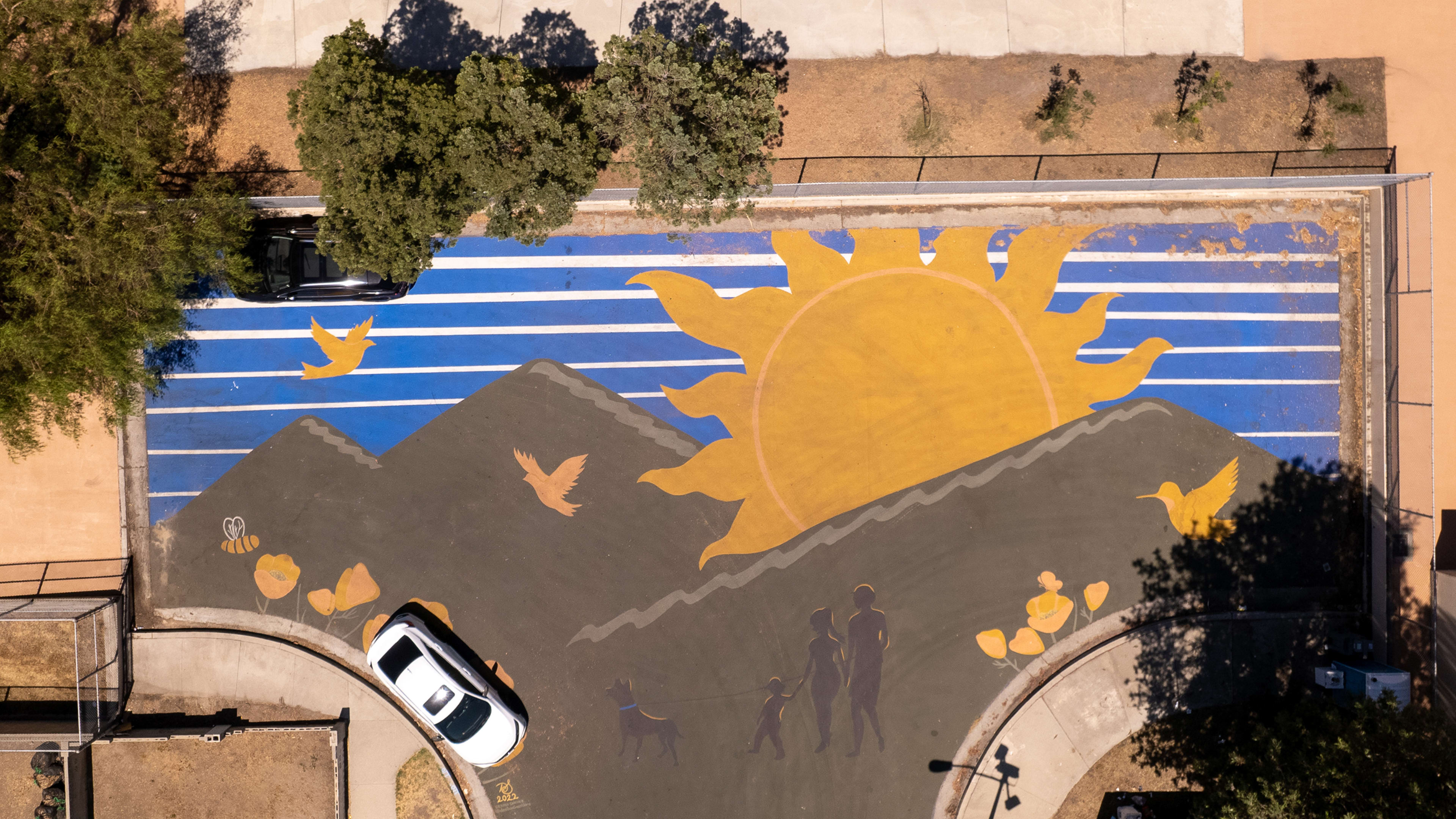In the summer of 2022, more than 1 million of square feet of roads in L.A’s Pacoima neighborhood were covered with solar reflective paint. Schoolyards, basketball courts, and parking lots were also painted, some with colorful patterns by a local artist. As we reported back then, the results were immediate and the paint reduced the surface temperature by about 10° Farhenheit. A year and a half in, the results are even more compelling.

The Cool Community Initiative, led by roofing giant GAF’s social impact initiative called Community Matters, in partnership with the City of Los Angeles’s Cool Streets program, has been undergoing study since it launched. Now, a peer-reviewed study by Altostratus, which also developed California’s Urban Heat Island Index, found that the surface temperature reduction directly correlated to a reduction in ambient air temperature—aka the temperature you’d feel walking in the neighborhood.
The neighborhood cooled by an average of 2.1°F, or up to 3.5°F during heatwaves. The coating also helped the pavement to warm more slowly before noon, and cool off faster after noon. “There are a lot of tools available to help adapt to climate change, and this is one of them” says Jeff Terry, VP of corporate social responsibility and sustainability at GAF.

Keeping cities cool with solar reflective paint
A city’s toolkit for keeping cool will largely depend on its climate policy, geographic and socioeconomic conditions, and its affinity for design-led solutions. Barcelona and L.A have set up “climate shelters” or “cooling centers;” Dallas has been planting thousands of trees; the Saudi city of Madinah, where more than 20 million pilgrims visit every year, has built a giant network of folding umbrellas outside The Prophet’s Mosque. In Pacoima, a low-income, predominantly Latino community, the initiative was led as a philanthropic initiative, but no matter how you slice it, solar-reflective coating is a low-tech, low-cost solution, and more cities should consider it.
Pacoima wasn’t the first initiative led by GAF, and it’s not the last. To date, GAF has applied its coating, which is called StreetBond, to 130 schools across the country—most recently in a middle school in Mableton, Georgia, where the project was used as a tangible learning tool among students, who participated in the cooling initiative and learned to measure and compare temperatures of both painted and unpainted surfaces. In January this year, the team also applied its solar-reflective coating to basketball courts outside a community center in Kissimmee, Florida. The team is now in early conversations with F1 Miami to bring similar solutions to the city.

In Pacoima, Terry says his team spent “tremendous amounts of time” talking to local residents. One person said that their car wasn’t as hot in the morning, another one said they were able to expand the basketball league at their local park because the outdoor basketball was now usable.
And it’s not just localized observations: the coating proved to have a community-wide impact. The study was carried independently of GAF and took place over 12 months, during both daytime and nighttime, and in various conditions, including an extreme heat-wave event. It showed that the larger the coated area is, the more people could feel the cooling effect. Haider Taha, who led the study, calls this a cumulative cooling effect, which occurs, as he explains it, when an air parcel travels over a coated street or surface. “The longer that contact is, the cooler the air will be at the end of its trajectory,” he says.
In addition of the cumulative cooling effect, the study shows that, thanks to wind flow, cool air can be transported downwind for about a city block beyond the coated area. As Taha notes, the air temperature reduction is relatively small (about half a degree) but it’s “still quantifiable.”
Recognize your brand’s excellence by applying to this year’s Brands That Matter Awards before the final deadline, June 7.
Sign up for Brands That Matter notifications here.
